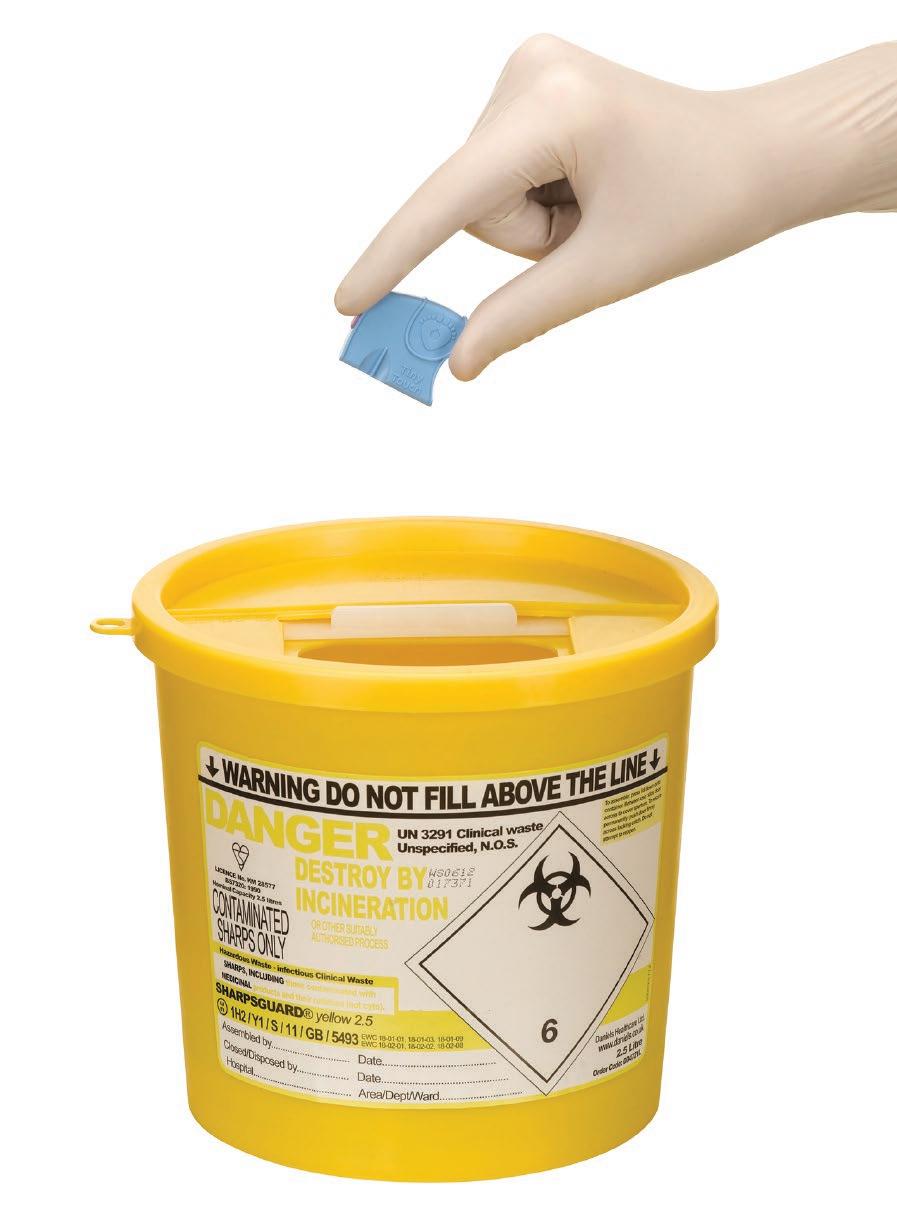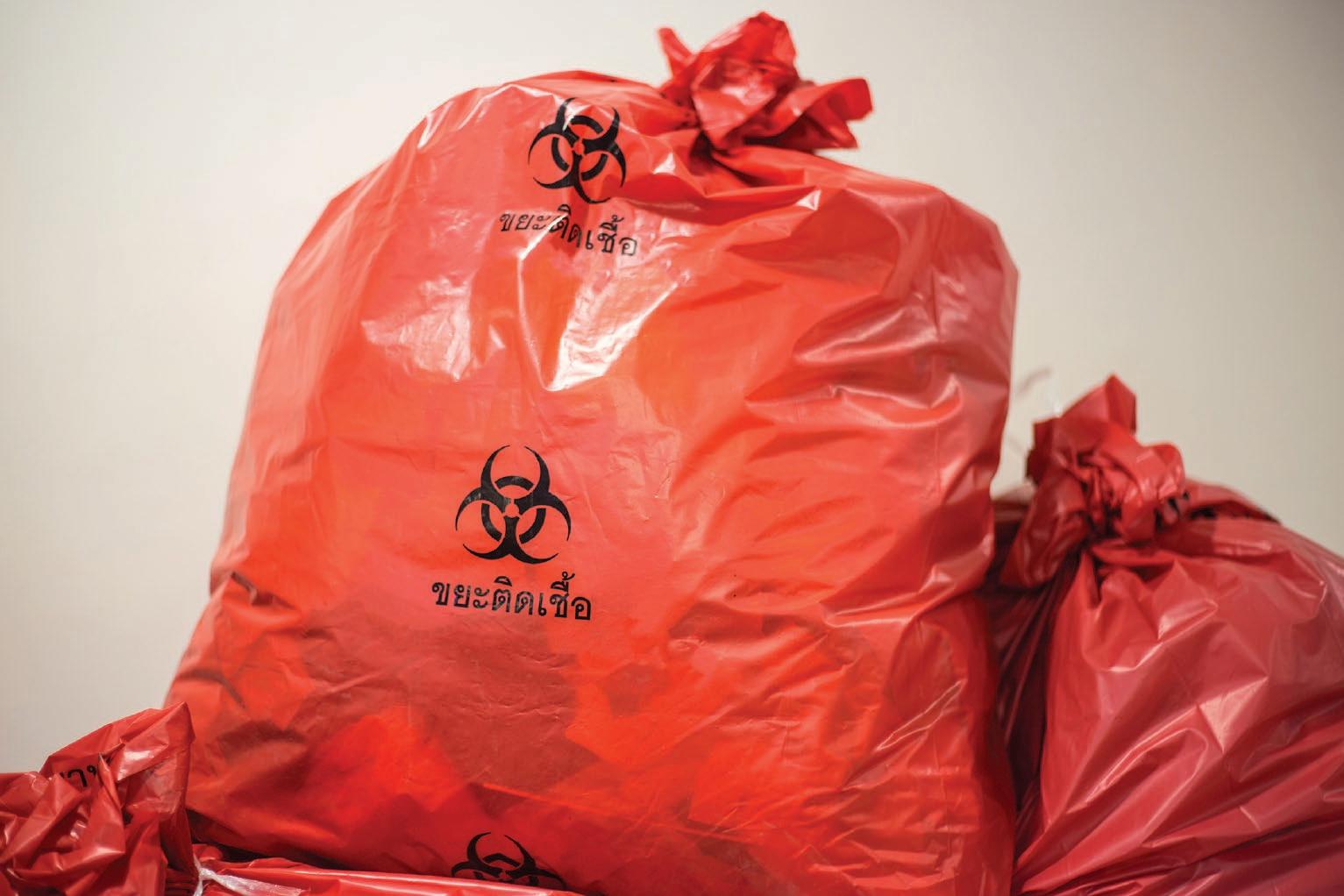PREVENTING NEEDLE STICK INJURIES AND THE ROLE OF SAFETY DEVICES
Getting the Right Device John Hancock, Editor Device safety and control are essential elements in the administering of injections
We’ve now considered needlestick injuries, how to treat and how to avoid them through regulation of the injection process and careful procedures. But, as Peter Dunwell suggested at the end of the previous article, the other significant way in which safety can be built into the injection process is in the design of the devices. So, let’s have a look now at the devices and what is being done to make them safer and more effective.
There was no doubt that passive safety pen needles improve safety against needlestick injuries (NSIs) but in the same survey respondents felt that a combination of safety and control during the injection process were equally important
14 | WWW.HOSPITALREPORTS.EU
Engineering Safety into the Device When an injection device has safety engineered in to the device, that is often some sort of shielding either of a sort that can be removed by the user, usually a healthcare professional (HCP) who is administering the injection, or of a sort that retracts when the device is pressed against the patient’s skin so that, before and after the injection, the actual needle is shielded. Cision PR Newswire60 citing the survey ‘Safety Pen Needles – Take Control’ reported, “practical challenges with passive safety pen needles, including premature activation of the safety mechanism before the injection has been completed leads to uncertainty as to whether the full medication dose is delivered to the patient.” There was no doubt that passive safety pen needles improve safety against needlestick injuries (NSIs) but in the same survey respondents felt that a combination of safety and control during the injection process were equally important. This blend of safety and function becomes more important when patients are administering their own drugs such as diabetics administering insulin. Pharmacy Times61 relayed, “a recently hospitalized patient with type 1 diabetes did not know to remove the standard needle cover from the standard insulin pen needle prior to administration. She was unaware that she was using the pen incorrectly and, thus, had not been receiving any of her insulin doses. The patient developed diabetic ketoacidosis and later died.” So, a good design is one that is able to meet both the need for patient and HCP safety as well as observably completing the injection process and giving the administrator full control over the process.
Healthcare Professionals’ Concerns with Passive Safety Pen Needles Going a little more granular, Healthcare Purchasing News62 notes, “Healthcare professionals who use passive safety pen needles have reported that design flaws often make it difficult to deliver a consistent standard of care to their patients. Hidden needles and premature activation are common concerns. Additionally, a study in the Journal of Hospital Infection revealed that injection pen use correlates with a higher rate of NSIs among healthcare professionals who give injections.” Add to that that there are several brands of injection pens with which any safety needle needs to be compatible. Some important safety and control factors that have been identified in a number of surveys and reviews are that the needle should be visible throughout the injection process to ensure control, that there should be a means for the user to know when the safety mechanism is active and correctly timing the activation and dosage dispensed.
Key Considerations When Choosing Passive Safety Pen Needles Unsurprisingly, the key considerations are mainly in respect of the requirements already listed. So, it will be important to know that the needle conforms to standards for the jobs it will have to do and that its operation is reliable, that it is easy to use and safe. Essentially, users, whether healthcare professionals or patients, should not have to compromise between safety and function, delivering the required dose. The wrong dose can be more than simply inconvenient. Some drugs are effective over a very narrow therapeutic range which is gauged for each case. For example, inappropriately low doses of insulin can cause excessive levels of glucose in the blood (hyperglycaemia). This can result in a condition called ketoacidosis, which can lead to coma, swelling of the brain and even prove fatal. Conversely, inappropriately high doses of insulin can lead to low blood glucose levels






